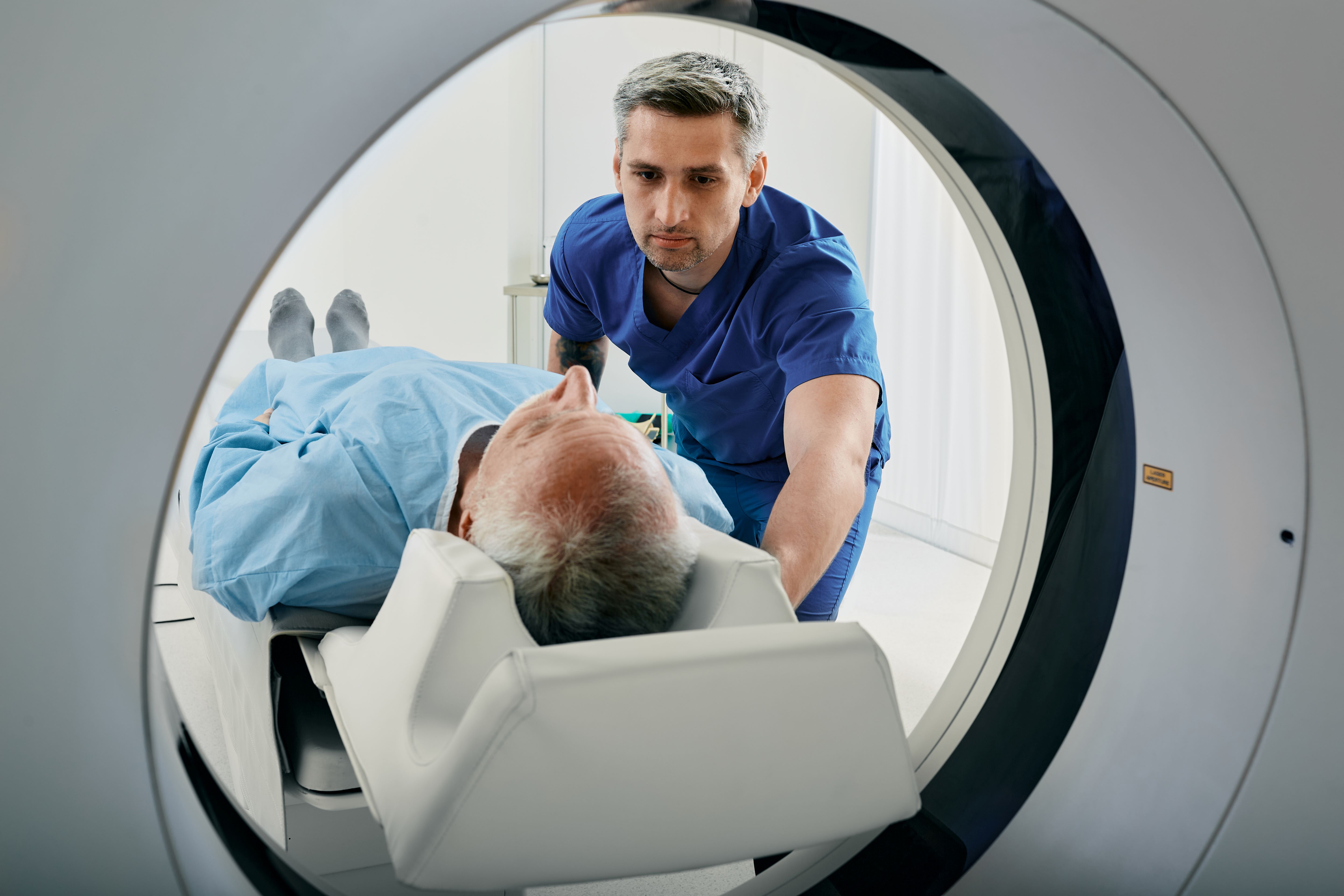NASS and BRITSpA publish new study on the use of MRI in axial SpA diagnosis

New NASS and BRITSpA study shows that MRI is more commonly used as a standardised way for diagnosing axial SpA, but patients are waiting longer and there is a reliance on outsourcing of scan reporting.
NASS in collaboration with BRITSpA undertook work to understand what current practice is in place for the use of and access to MRI in the diagnosis of patients with suspected axial SpA.
We were also keen to assess if previous inconsistencies in MRI use in clinical practice had improved since the development and publication in 2019 of a set of consensus guideline by BRITSpA.
To find out we sent the survey to 150 organisations to assess the current provision of MRI in axial SpA diagnosis across the UK. NASS developed the survey in conjunction with BRITSpA and key clinical advisors, building on the 2017 BRITSpA survey to allow some comparison. It was sent out via a FOI request in September 2022 to all UK hospital Trusts, Health Boards, and secondary care providers, assessing:
- The levels of access to appropriate scanners including numbers, wait times, and scanner type.
- The working level relationships between rheumatology and radiology.
- The practices in reporting of MRI scans and the balance between in-house vs outsourced and MSK vs generalist radiologists.
- When MRI is used in the diagnostic process, and reasons for not using MRI.
- The specific MRI protocols in place including the coverage, sequences, and acquisitions.
- The knowledge of specific axial SpA and MRI lesions and definitions for diagnosis.
The study has shown there have been several positive developments in the understanding and use of MRI for diagnosis of axial SpA in the UK since the 2017 survey: radiologists are now more willing to use MRI as part of the diagnostic workup for axial SpA and have a greater understanding of the relevant diagnostic features, albeit with scope for further improvement. However, several new challenges have emerged from this study, including the increase in wait times, reliance on outsourcing and the association of non- specialism on awareness of axial SpA terminology and recommendations.
We are launching these findings in our report, The use of MRI in the diagnosis of Axial SpA, today and you can read more on the findings here:
Dr Dale Webb, CEO NASS commented on the publication:
“Our study has shown that there has been significant progress in raising the awareness amongst radiology teams of axial SpA and hope that the analysis can contribute to an ongoing debate on the most appropriate first line investigations including imaging for patients with suspected axial SpA.
Our biggest concern is the emergence of the reliance on non musculoskeletal outsourcing for the interpretation of images and the lack of associated quality control.
We continue to recognise the significant pressures on our health care professional (HCP) colleagues and are heartened by the support and commitment of those HCPs who work with us to create the conditions for change at a local level.”
Helena Marzo-Ortega, Chair of the Executive Committee, BRITSpA, said of the findings:
“In 2017, the British Society for Spondyloarthritis (BRITSpA) conducted a national survey which showed a lack of awareness and standardised MRI protocols in the UK.
The current survey performed by NASS testifies to the success in the dissemination of the BRITSpA guidance, yet more work needs to be done to improve outcomes related to the reporting and interpretation of MRI scans.”
As a result of the survey, we are calling on the rheumatology community in the UK to continue to push for change in this area with recommendations for:
- Adoption of Axial SpA spinal MRI protocols in line with BRITSpA recommendations
- Patients deemed as requiring MRI have one of at least the thoracic, lumbar along with the SIJ
- Interpretation of MRI by specialist MSK radiologists
- Ongoing education and professional development
- Access to and joint working with specialist MSK radiologists for rheumatologists
- Close monitoring of outsource MRI reporting
- Further consideration of the optimal provision of MSK imaging
- Submitting surveillance evidence to NICE to explore an update of NG65
Notes for Editors
1) About the National Axial Spondyloarthritis Society (NASS). At NASS we transform the diagnosis and care of people living with axial SpA. Axial SpA works silently. We don’t.
2) About Act on Axial SpA. The Act on Axial SpA campaign aims to drive down the 8.5 year delay to diagnosis of axial spondyloarthritis by introducing the world’s first Gold Standard diagnosis time of just one year. The campaign is led by NASS in partnership with Norfolk & Norwich NHS Foundation Trust and RUH Bath NHS Foundation Trust and funded by UCB.
3) The British Society for Spondyloarthritis (BRITSpA) was created in 2014 by a group of clinicians with an interest in Spondyloarthritis. Our main purpose was to facilitate the sharing of information related to all aspects of the Spondyloarthritis group of diseases including but not limited to axial SpA (including Ankylosing Spondylitis), Psoriatic arthritis, Reactive arthritis, arthritis related to inflammatory bowel disease and undifferentiated Spondyloarthritis. The idea was to create a network among members of the various medical disciplines and allied health professionals who manage or investigate aspects of these conditions and related disorders to enhance research, diagnosis and treatment of the Spondyloarthritis in the UK. Find out more at www.britspa.co.uk
